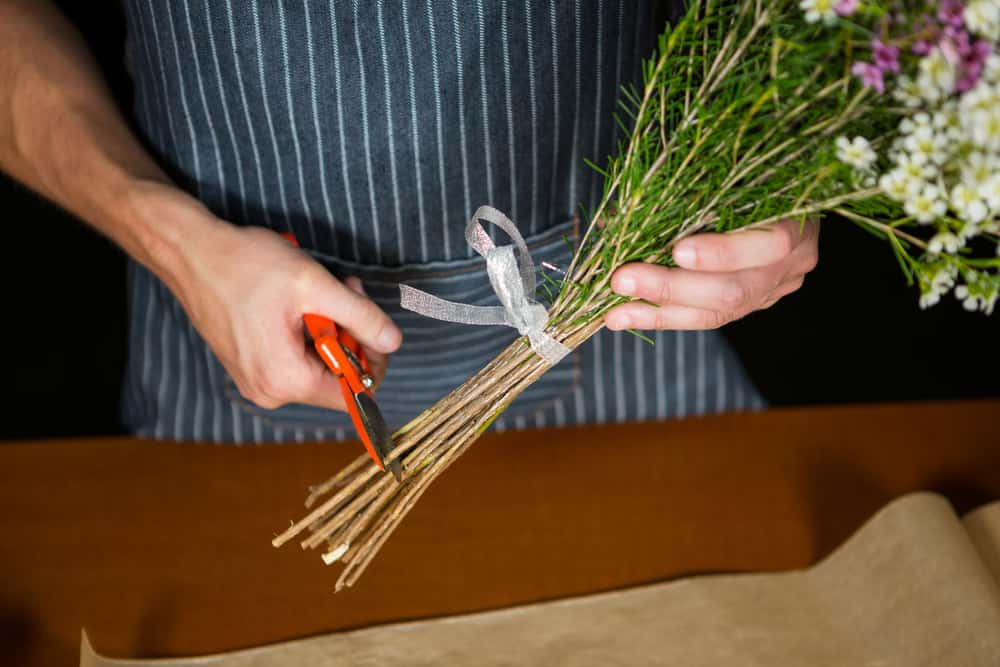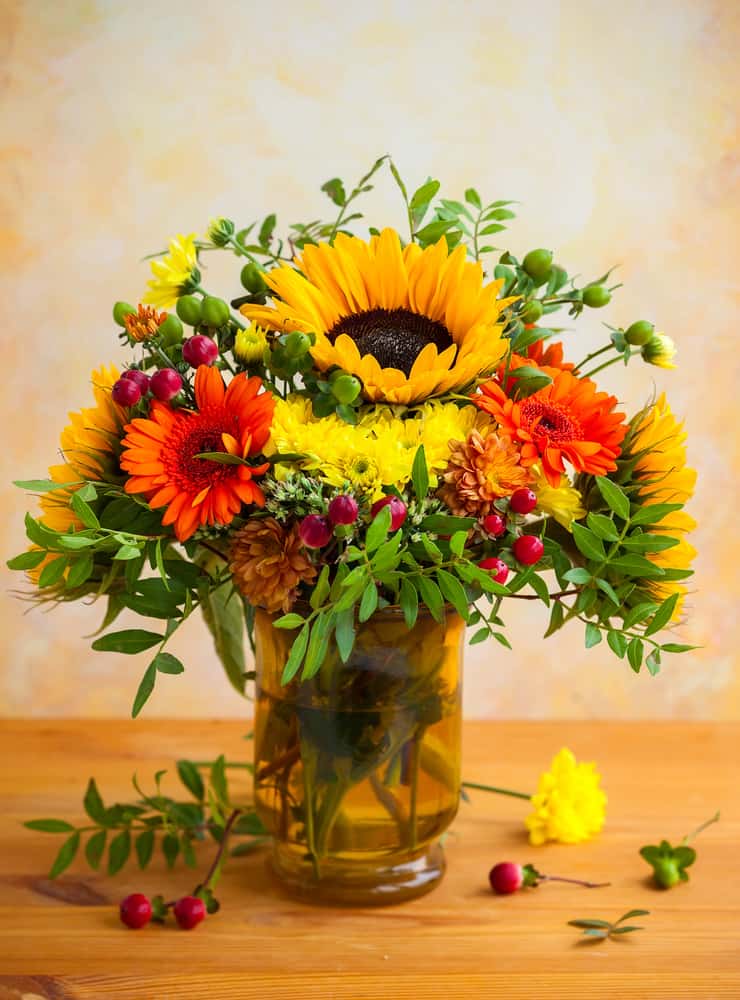Whether you’re cutting flowers from your garden, picking up a bouquet at the grocery store, or bringing home some zinnias and sunflowers from the Austin Spring Festival at Barton Hill Farms, you’ll want to keep those blooms looking beautiful for as long as possible. With a few simple tricks, you can extend the life of your flowers and enjoy them for days or even weeks!
Here are some methods you can use to keep your fresh cut flowers alive longer.
Handle With Care
Step one occurs before you even get the flowers into your home. You know that you want to protect stems from breaking, but you also want to avoid bending them. A bend will create blockage for water and other nutrients, preventing these resources from reaching the flower. So protect the stems of your cut flowers when they’re in transit.
Start With a Clean Vase
Dirty vases can harbor bacteria, which is a problem for your bouquet of flowers. That bacteria will grow on the stems, and can completely clog the cut at the bottom — preventing water and nutrients from being absorbed and reducing the life of your blooms. Slow bacteria growth by starting with a freshly cleaned vase.
Trim, Trim, Trim

Before your flowers see the inside of a vase, make sure to give them a trim. Cut an inch or two off of the bottom of each stem at a 45-degree angle with a pair of sharp garden shears. This prevents them from sitting flat on the bottom of the vase and blocking water from getting in. Re-trim them every time you change the water (see below) to ensure ample absorption.
You should also remove any excess leaves below the water line in your vase. Wet leaves can get slimy and cause bacterial growth, which will shorten the life of your flowers and create icky mold.
Keep the Water Fresh
To keep flowers fresh, you have to keep your vase water fresh! Empty the vase and refill with fresh water every other day to keep things nice and clean.
Also consider your water temperature. Aim for lukewarm or slightly warm water, as it’s more easily absorbed by the stems than cold.
What About Flower Food?
If your bouquet came with one of those flower food packets, mix it into the water in your vase and make sure it’s well dissolved. These packets usually include sugar for nutrients, an acid to keep the pH balanced, and bleach to ward off bacteria.
But if you replace the water every few days and you only have one packet of flower food, how can you continue to feed your fresh flowers?
Make your own homemade flower food from a few common household ingredients!
Combine 2 tablespoons of lemon juice, 1 tablespoon of sugar, and 1/2 tablespoon of bleach to get a similar effect to the powdered packet. Mix it in with a quart of lukewarm water to keep blooms bright.
Another good option is to add 1/4 cup of lemon-lime soda to your vase. The citrus adds acidity, and there’s plenty of sugar for food. Or you can combine 2 tablespoons of apple cider vinegar with 2 tablespoons of sugar for a similar effect.
Some other common preservation theories include:
- dissolving an aspirin in the water
- adding a splash of vodka
- putting a copper penny in the vase
- spritzing flowers with hairspray
These tips probably won’t hurt your arrangement, but they don’t seem to work as well as a more balanced plant food.
Vase Placement

Where you place your vase of fresh flowers can have a dramatic effect on how long they last! Keep it out of direct sunlight, which can get too warm and cause wilting. Also avoid drafts, like open windows or ceiling fans, which can dehydrate the blooms. And keep your bouquet away from the fruit basket! Fruit releases ethylene gas as it ripens, which can cause your flowers to age quickly.
Another great tip — do like the professional florists do and keep your flowers cool. Put your vase of flowers in the refrigerator overnight when no one is awake to enjoy them. These cool temps will help preserve the life of your arrangement.
Remove Dying Flowers
Some of your flowers may fade earlier than others. As this happens, they can mold and speed up the decay of your other flowers. Remove dead and dying blooms to keep the arrangement looking nice and to prevent contamination of the rest of the bouquet.
Preserve those Petals!
We all know that flowers are fleeting, which is part of what makes them so precious. With these tips and tricks, you can make your flowers last longer and bring cheer to your home. And when you need a new arrangement, come back out to Barton Hill Farms to walk the rows of zinnias, sunflowers, cosmos, and lupines to cut another bunch.

